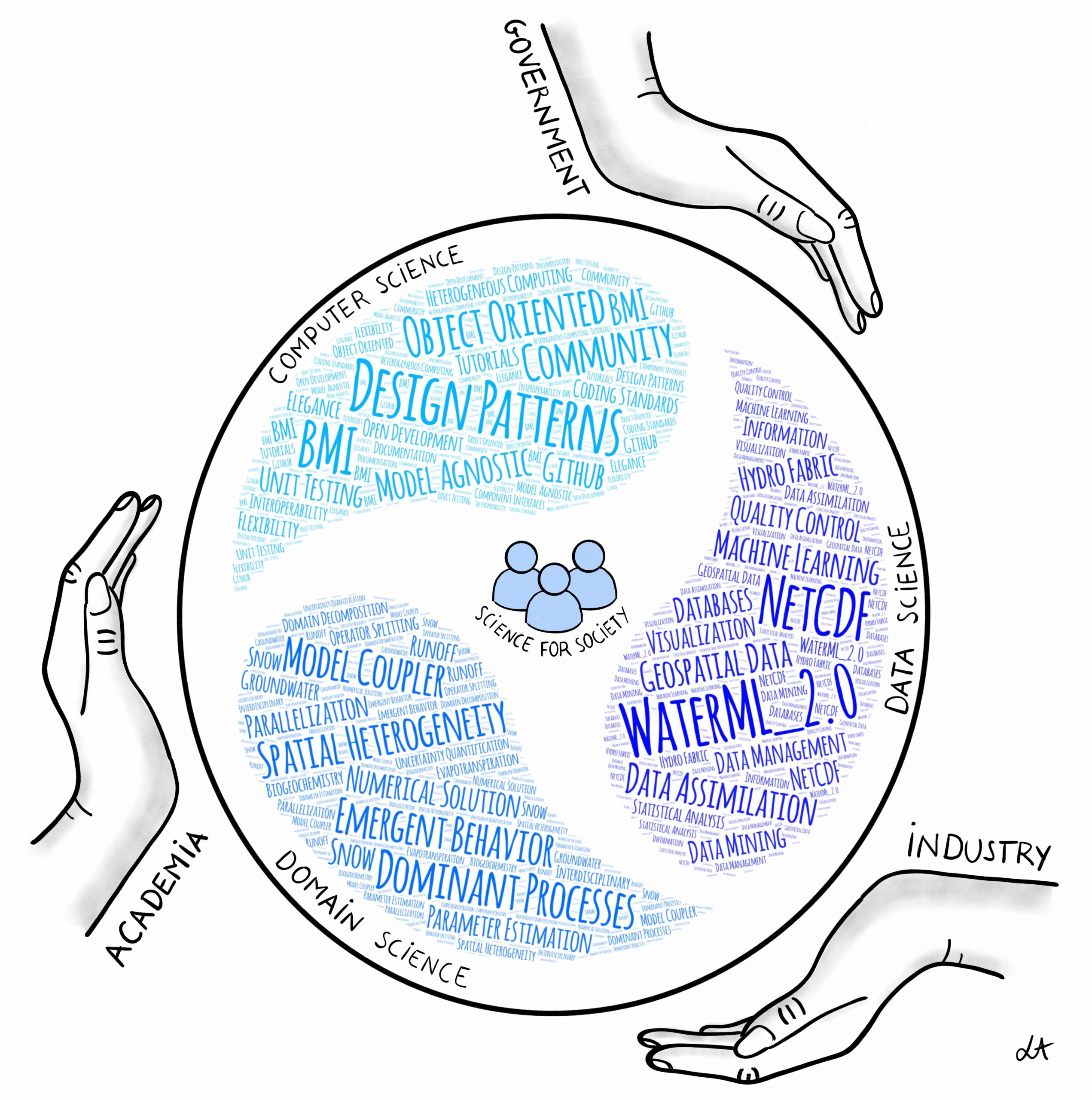CIROH supports NOAA and the National Weather Service with research strength to advance the U.S. capability for operational hydrological forecasting of streamflow, floods, droughts, and water quality. As a consortium of 28 academic, government, and commercial institutions, CIROH will enable transformational change within the hydrology community by advancing community water modeling and collaborative hydrologic research. CIROH integrates domain science in water with computer science, data science, and decision science. Leveraging the Alabama Water Institute and working closely with NOAA’s Office of Water Prediction, CIROH builds partnerships across academia, government agencies, and the private sector.
Mission
To innovate research that enhances our understanding of how coupled atmosphere-oceanland-biosphere components interact hydrologically and transform this new knowledge into operational research products benefitting society.
Vision
CIROH is a leading translator of world-class water science research to operations, putting actionable water intelligence in the hands of those managing floods, droughts, and water quality. CIROH empowers researchers, scientists, and learners of all types to understand hydrologic science, build community resilience to water-related hazards, and produce benefits for society.

Core Capabilities
- Simulating hydrological phenomena with linked terrestrial and coastal models and advancing artificial intelligence for water resources forecasting to inform life-saving decisions
- Prototyping operational forecasting improvements in the model workflow to support extension of next generation water modeling for a national community of hydrological users.
- Leveraging process advancements and modeling improvements to create tools and applications to deliver actionable water resources intelligence to engage a broad array of stakeholders in management, operations, and emergency response.
- Improving strategies, methods, and tools for the delivery and efficacy of communication and decision support services through applied social science research, community resilience planning, stakeholder engagement; and risk perception and communication research.
- Providing education, outreach, and engagement opportunities in NOAA-related research on applications of hydrological processes, communication, and decision-making to support student participation in areas that will cultivate a desire and capabilities to join the future workforce in NOAA.
